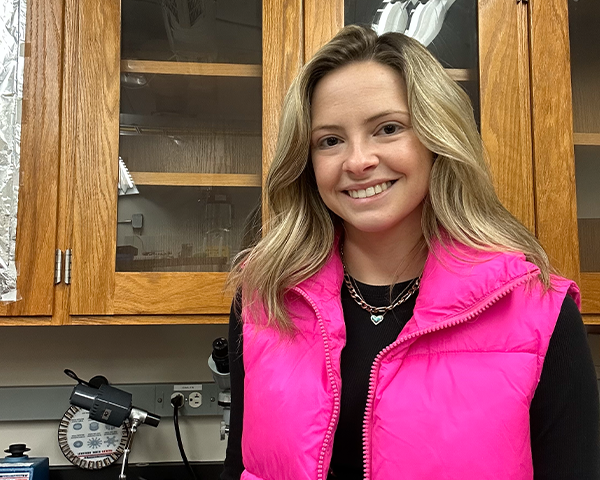Saving the Planet with Microbes

Kennedi Hambrick is going to be a doctor. Not the clinic-and-patients type, but the saving-the-environment with microbiology type.
Hailing from Jonesborough, Tennessee, Hambrick first came to UT as an undergraduate student with the goal of one day becoming a medical physician, but ended up discovering her love of working in microbiology research after joining a lab while an undergraduate.
What is unique about Hambrick is that after completing her bachelor’s degree, she was able to remain at UT to pursue her graduate degree, which is not something many pursuing a PhD get to do. However, she says that staying at UT has helped to make the switch easier.
“I was actually very thankful to have the opportunity to pursue my PhD at the same institution where I got my bachelor’s degree,” Hambrick said. “The sense of community and support I already had with the microbiology department within UT was great, and it really helped ease my transition.”
Hambrick is currently in her first year, and joined the lab of Associate Professor Erick Zinser researching the interactions between the cyanobacteria Microcystis aeruginosa and its cyanophage MA-LMM01. M. aeruginosa is naturally found in freshwater lakes. Its NIES-298 strain produces a harmful toxin called microcystin, which can contaminate drinking water, causing health issues for those who drink it. Its cyanophage selectively infects and renders it harmless, helping to offset toxin production.
“In nature, cyanophages decrease the abundance of cyanobacteria in the environment,” Hambrick said. “We wanted to understand if varying levels of microcystin production had an impact on the infectivity of the cyanophage Ma-LMM01.”
First, bacteria are incubated at different temperatures. When the host bacteria acclimate to the temperatures, they are infected with their cyanophage. Before and after infection, Hambrick takes toxin samples, cell counts, and DNA samples, which allows for comparisons of host toxin productions at the onset of infection for each temperature. Flow cytometry is used throughout the experiment and infection to account for the quantity of viable host cells in co-culture with the cyanophage.
Although Hambrick is still early in her graduate studies, it is clear that the work she is doing is laying the groundwork to making a positive impact on the environment. She looks forward to continuing her lab work and hopes to make an impact with her research.